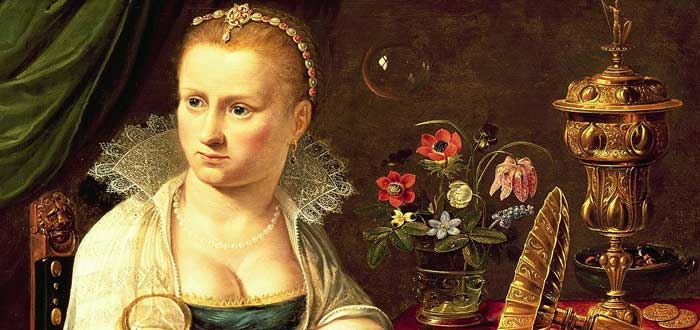Until practically the middle of the 20th century, women were separated from the spheres of power and also from the majority of professions exercised by men. If we except the queens, all the women who excelled in some field had to earn the place they occupied with much more effort than their male counterparts and even in some cases like that of Juliana Morell , the first woman to obtain a PhD, they finally opted for religious life to be able to focus on studying. The women who dedicated their lives to art They did not have it easy either. Join us to meet Clara Peeters, a woman painter who changed the history of painting by introducing important novelties in the, in its incipient time, still life painting .
Clara Peeters | 7 curiosities of a woman painter
There are few data on the life of Clara Peeters . It is believed that he was born in Antwerp around the year 1594 and died in The Hague in 1657. His father's name was Jan Peeters and he was also a painter. She was baptized in the church of Santa Walpurgis on May 15, 1594. She was a very precocious artist since her first known work is dated when Clara was 14 years old. There is no information about her death, although the date of her last known work is taken for her: 1657. Let's go with the curiosities about this painter!

1. A Clara Peeters She is considered a pioneer in the introduction of still life in the history of painting. Only about 40 works by the artist are known, but all of them reflect the mastery and courage of this great woman. She painted countercurrent, not only because she was a female, but because she opted for realism against the Renaissance idealism that still existed in her time.
2. Among the changes that Clara Peeters introduced in the painting highlights the inclusion for the first time of the fish as a protagonist in a still life. Fish was a very important part of the diet of the Netherlands and it is normal to be at all tables, but although we can see it in paintings about kitchens or meals, had not been painted before in this type of works as the main reason. Peeters is extremely meticulous in detail and an extraordinary specialist in shaping textures as well as a master in light and reflection.

3. A Clara Peeters She is currently called the "forerunner of selfies." One of the most important works attributed to this painter is the "Self-portrait" that we have included at the beginning of the article. However, to make a self-portrait was and is something normal among the artists, it was not so much to be portrayed in an almost hidden way in the objects of the still lifes that he painted. Let's see two examples:
In this cup in which it was portrayed at least six times in the reliefs and can be seen painting.

And in this pewter arra. From it many painters of the seventeenth century were also portrayed in a "hidden" in objects of his paintings.

4. Despite the little information that is available about the life of Clara Peeters it is believed that she was married, first because there is a marriage of the year 1639 in some parochial registers and in second place because in many of her still lifes we see a knife that was traditionally given for betrothal. Clara puts it in her works in a pre-eminent place and with her name engraved on it.

5. At the time he lived Clara Peeters it was necessary that the painters artists were associated with the guild of their city. However, the painter does not appear in any of the Antwerp guild lists. It could be that the list on which his name came out would have been lost, but historians believe that he may never have been an artist. This could happen for two reasons: first, because, like most women painters in history, she surely learned to paint in her own home with her father and not following the tradition of learning in a teacher's workshop. Secondly, because women depended on their parents and husbands and in the case of Clara Peeters both were painters and if they were unionized it was enough.

6 Clara Peeters , as many other women painters had very limited access to learning their profession. Not only did they have to learn to paint in the family environment, but they were also prohibited from "anatomical drawing" since it was done with naked male models. For this reason, many of the women artists specialized in making still lifes.
7. Historians believe that the fame of Clara Peeters In his time it was very big and he had his own studio, although he was considered amateur. Copies of his works have been found and in others, his originals, traces made by less secure hands are seen.

As a last curiosity we will add that Clara Peeters she was the first woman to whom Museo del Prado dedicated an exhibition . This happened in 2016.
Most historians of art consider that Clara Peeters It was discriminated against because of its sex and that if it had been male and had not had the limitations imposed by the era, it would have passed into the history of painting in capital letters. Did you know Clara Peeters? Do you like the idea of immortalizing yourself by making selfies in your still lifes?